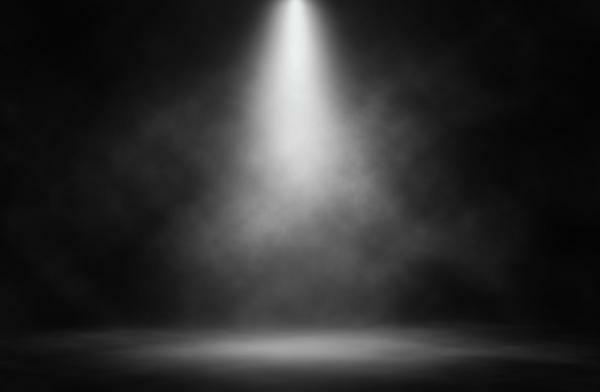
Daily we are surrounded by thousands of stimuli which exert an influence on us, however, living beings have the ability to inhibit those stimuli. which are irrelevant to us since, if we did not have this ability, we would find ourselves in a situation of information overload since we would always be hyperactivated.
But, do we know what are the processes that allow us to carry out this information screening? If not, in Psychology-Online we want you to get to know them in an adequate and simple way. Therefore, in this article we will see the definition of selective attention, with examples and exercises.
Index
- What is selective attention: definition
- Examples of selective attention
- Functioning of selective attention
- Characteristics of care
- Selective attention exercises
- Difference between focused, sustained, alternating, divided and selective attention
What is selective attention: definition.
The selective attention it is the allocation of attentional resources in those moments in which there are conflicts between different signals. In these complex situations, it is required to be able to inhibit a series of stimuli while others are processed. You can define its function as the
Selective attention can work in three different areas:
- Selective spatial attention, which facilitates the processing of those stimuli which are in a given space.
- Selective focus on the object, where the attentional frame of reference is an object in order to adequately process all its characteristics.
- Temporary selective attention. It is considered a human ability that allows us to use information about time intervals to optimize the detection of important information.
Examples of selective attention.
Many of the times in which we use selective attention we do it unconsciously since without realizing it we pay more attention to some stimuli than to others. For example, in these cases we use selective attention:
- When we are waiting for a message and we know that a bell will ring to notify us of the arrival of the message, our attention inhibits any other sound focusing only on the phone.
- When we drive we also use it since we only process that information that allows us perform adequate driving, avoiding and inhibiting all those stimuli that can act as distractors.
- We also use selective attention when we are taking an exam, so that we focus all our attention in responding to it by preventing other stimuli from interrupting said task.
Operation of selective attention.
When it comes to identifying the important stimuli, people can do it in two different ways, through open orientation and covert orientation. With regard to the first, eye movements are necessary to fix our gaze on the desired stimulus, however, in covert it is not necessary to change the position of the head or eyes. Therefore, there are a number of advantages of the covert versus the open:
- Does not require eye movements
- As there is no movement, it is faster
- Facilitates the processing of stimuli by activating the neural pathways that will process it later
When explaining the operation of selective attention we could make use of a metaphor known as spotlight. To do this, you have to imagine the attention as the focus of light emitted by a flashlight, where the area that remains The illuminated area is the one that would be processed in a faster and easier way, while the dark area would be inhibited.
The operation of selective attention is not a unitary process, but rather involves a set of different mechanisms that work in a coordinated manner.
Characteristics of care.
To properly understand selective attention, it is worth mentioning some of the main characteristics of attention:
- Intentionality: Helps activate, focus and maintain attention on relevant stimuli.
- Expectations of the subject: they influence the attention that the subject places while waiting for what he is anticipating.
- Activation of cognitive processes information processing.
- Orientation: ability to direct cognitive resources to stimuli voluntarily.
- Targeting: ability to focus on certain stimuli.
- Concentration: amount of resources used for a specific activity.
- Flexibility: ability to change the focus of attention.
- Stability: possibility of maintaining attention for a certain time on a given stimulus or task.
Selective attention exercises.
To evaluate selective attention from the point of view of psychology, we found different instruments:
- The Incomplete Figures: the subject must look at a drawing and name which important part is missing.
- WAIS Symbol Search- You should observe two groups of symbols, a key group (2 symbols) and a search group (5 symbols). Then you must decide if either of the two symbols in the key group is equal to any of the symbols in the search group.
Since selective attention requires a process of selection, control, and intention, the following tests are suggested:
- Go / no go: he must respond to all the arrows that are presented to him except those that present certain characteristics indicated by the evaluator.
- Stroop: a sheet is presented where they have to read the words (name of colors) omitting the color in which the word is painted. It can be done in reverse, that is, saying the color in which the word is painted.
- WSCT: a series of stimulus cards are presented to the subject and they must match the problem card with one of them. However, the subject does not know what the matching criterion is and in addition, the criterion will change randomly, so the subject must be able to readjust his response.
With these attention tests you can identify the Attention disorders.
Difference between focused, sustained, alternating, divided and selective attention.
The focused attention It is the ability to regulate the attentional intensity directed towards a task, that is, what is known as the ability to concentrate.
The sustained attention refers to attentional variations over time. This type of attention is considered as the ability to maintain an effective level of response in a demanding task over a certain interval of time.
The alternating attention it is the ability to shift the attention focus from one task to another, interspersing the execution of one part and the other.
The divided attention It is the capacity of attention to attend to two or more tasks at the same time. It refers to the distribution of attention resources to be able to efficiently process different sources of information which are present at the same time. It is considered that, in these situations, attending implies distributing resources according to the demands of the concurrent tasks.
This article is merely informative, in Psychology-Online we do not have the power to make a diagnosis or recommend a treatment. We invite you to go to a psychologist to treat your particular case.
If you want to read more articles similar to Selective attention: definition, examples and exercises, we recommend that you enter our category of Cognitive psychology.
Bibliography
- Avila, C. Cognitive functions. Jaume I. University 2019
- Roser Poy. Perception and Attention. Jaume I. University 2015


